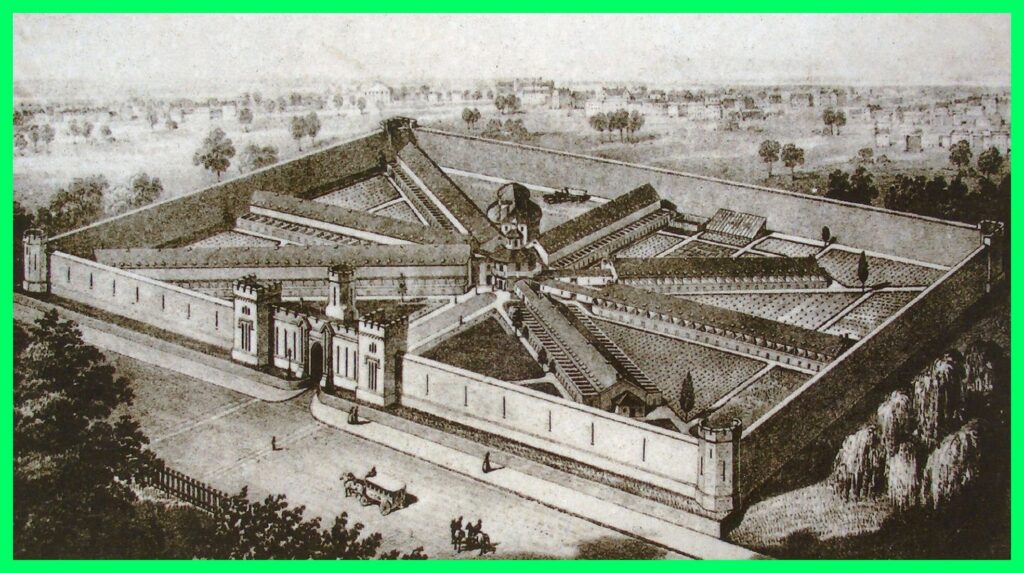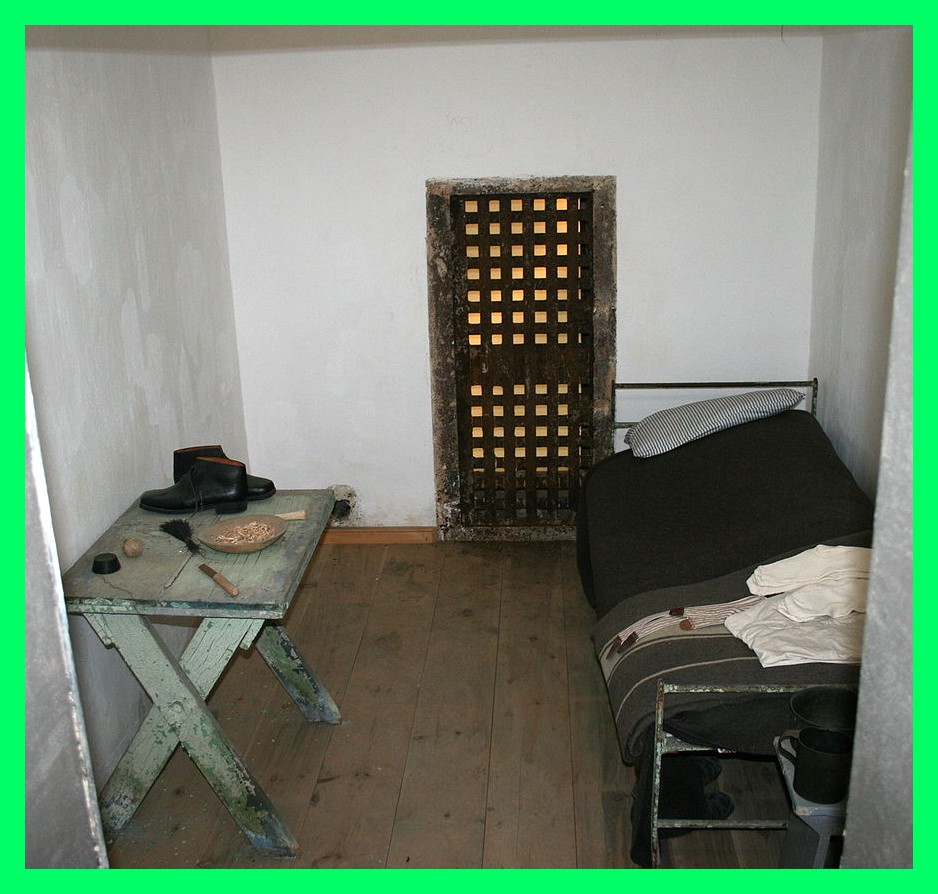
Eastern State Penitentiary in Philadelphia, opened in 1829 and closed in 1971. For years it was the main state prison to which convicted criminals from eastern Pennsylvania were sent, including most from the Lykens Valley area who were sentenced to terms of a year or more. The radial design, with the cell blocks branching like wheel spokes off a central hub where the guards were stationed, was considered revolutionary. It became a prototype for other prisons built throughout the United States.
Today, parts of the prison have been restored and the site has been designated as a U. S. National Historic Landmark.

A typical one-person cell is shown in the above photo, as restored and part of the tour given today. However, it was a fact that prisoners were allowed to decorate their cells, for the most part, as they wished. In that sense, no cell was “typical” and each was personalized by the inmate.
In 1903, when the prison was at its zenith as a Pennsylvania penal institution, A. H. Smith, the editor of the Elizabethville Echo, decided to visit Frank Venaskie. It was only a few years after one of the most terrifying crime waves had taken place in the Elizabethville area. It was led by “Shorty Jones,” a name used by Thomas Frohm. In an attempt to arrest Frohm, he was killed. Soon after, his accomplices, including Frank Venaskie, were arrested. The story was previously told on this blog on April 27, 2017. See:
Smith’s interview with Frank Venaskie was published in the Echo on July 24, 1903:
VENANSKIE’S PRISON LIFE
The editor of the Echo was one day last week permitted by the authorities to spend about half an hour with Frank Venankie in his cell in the Eastern Penitentiary, at Philadelphia, where he is serving a five years’ sentence for attempted highway robbery, assault and a number of other charges. Venaskie, it will be remembered, was in company with “Shortie Jones” when he made his murderous raid in Jackson Township and in this borough, in August, 1900, the latter having been shot and killed near the camp ground, by the constable’s posse, while resisting arrest.
Venaskie was very communicative, and seemed “glad to see some one from near home” as he expressed it. he still persists in his innocence, and says he is being punished for the sins of “Jones.” When we reached Venanski’s cell at the foot of a long corridor we found it deserted, but an officer explained that Venaskie was assisting in cleaning the corridors, and that he would be sent to his cell at once. He has evidently been a good prisoner since his incarceration, for he is given considerable liberty. His cell is comparatively large and well ventilated , and is occupied by another prisoner besides himself. The cell has been quite nicely decorated by the prisoners, with framed pictures, easels, hand-carved brackets, and ornaments of various design. Two singing canaries also help to make the cell seem homelike. The two single beds were models of cleanliness, and were covered with spreads and shams of better quality than many people of average circumstances have in their homes.
When Venaskie saw us he hesitated a moment, but presently remarked “Oh, you’re Smith from Elizabethville.” he was anxious to speak about his arrest and the events which led up to it. He insists that Straser is still in the penitentiary, and he says there was still another young man in their company when they came to Elizabethville, but that he got scared and left for his home in Tower City, before the real trouble began. He said he had received letters from parties near this place inquiring as to the whereabouts of “Jones” money but he thinks Jones had spent all his money before he met his death.
He is cleanly shaved and wears the regulation prison suit — light-blue trousers and flannel shirt.
When we bode him good-bye, he asked us to give his “regards” to all his friends here and to tell them that he is enjoying the comforts of a very home-lie cell.
There are at the present time 1025 prisoners serving sentences in the penitentiary, one of whom, the head baker, has a sentence of forty years.
_________________________________________
From the Elizabethville Echo, July 24, 1903, via Newspapers.com. Photos from Wikipedia.
Corrections and additional information should be added as comments to this post.